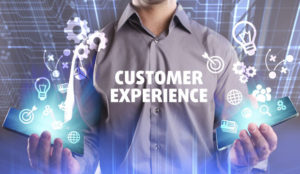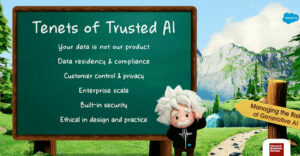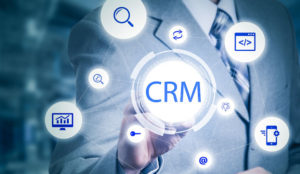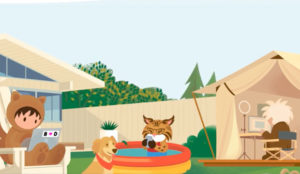Your new salespeople have very specific expectations of how their workday should flow. These 20-somethings want to sign a contract poolside, then post about it on Instagram — #workingpoolside, anyone? They want to approve a purchase order on the go as they head to post-work Pilates (and pizza). They want zero bumps in the road as they go from meeting to mixer. For them, stopping to hit “print” just isn’t in the cards.
Granted, these diverse early career professionals know that’s not going to be their every day. However, they want the option. That’s because increasingly your customers are Generation Z and young Millennials — a small but mighty cohort that, despite barely being out of school, already accounts for US$29 to $143 billion in direct spending. And they aren’t slowing down. By next year, Gen Z will be the biggest generation of consumers.
This seismic shift is forcing organizations to reconsider sales enablement workflows and processes, with an eye on meeting new sellers where they are — in this case, on a highly mobile, highly experiential, and highly relevant path to getting the job done.
Meet Your Next Great Customer – and Employee
Generation Z is anchored by an anticipated influx of 61 million job seekers. Even with their small numbers, these workers already are disrupting the workforce with characteristics and expectations that seem in total opposition to the way you’ve likely been doing business. For starters, they want won’t be chained to a desk — ever.
“How do I balance a 9-to-5?” asks Jonah Stillman, the 20-year-old founder of Gen Z Guru and author of Gen Z at Work. “People have been fighting this battle for years, and no one ever really figured out a solution. Gen Z has a great idea of how to manage it because, in our eyes, work is not a place. It’s an action. Whether I’m working at the office on my computer or on my phone somewhere, it’s manageable.”
He’s not alone. Gen Zers want to live their best life and they know they can’t accomplish that if they’re glued to a desktop computer.
As you’re bringing these young sellers into your business, it’s essential to keep that notion in mind. Focus on creating experiences that help these just-out-of-college salespeople “unchain” and do their job when, where, and how they’ll be most successful. It sounds simple, but it does require a major reset in the way you engage, activate and accelerate sales teams.
Arguably, though, it’s worth the commitment. Deliver these employee and customer experiences and you’ll be a hero, with countless social media shoutouts from successful sellers closing million-dollar deals poolside — deals that directly impact your bottom line. That’s the dream for your young sellers — and now it should be for you, too.
So, the big question: What, exactly, can companies do to harness the enthusiasm, tech-savvy, and unique approach to work espoused by Gen Z and young Millennials? It’s simple: Be more mobile, keep them in those experiences, help them live their best lives, and ensure they can accelerate and achieve fast.
Step 1: Master Mobile as the Ultimate Sales Anchor
Whether they’re at their desks or hanging poolside, sales teams expect to have efficient, effective mobile tools at their disposal — but not just any mobile solutions will do. Deliver a sub-par mobile experience and customers may be 62 percent less likely to buy from you in the future. Also, it’s not a great initial impression for your greener sellers, given they’re people out there in the world, banging the drum for your brand.
That’s a problem, especially considering the sky-high expectations of today’s mobile-first Gen Zers and young Millennials. Focus on first impressions and make sure you’re creating mobile experiences that matter — mobile experiences that enable your audience to live their best life while still getting the job done.
That said, going mobile gives you the power to deliver the same experience and responsiveness you’d get on a desktop computer. Now, though, it’s in a more convenient, more go-anywhere format.
Don’t make people pinch and zoom to find what they’re looking for. If a step has to happen in the sales process — signing a contract, for example — make sure it can happen within that mobile environment. That’s a positive, productive experience, and that’s powering your next-gen workforce.
Step 2: Never Take Them Out of the Experience
In that vein, your mobile products need to facilitate relevant, high-value experiences that keep sellers and customers moving forward in their paths to finalize conversion. You want your sales team to be able to finalize an agreement, integrate customer feedback, and lock down approvals and final signatures on-the-fly, while tracking POs and understanding what needs to happen now to get the deal done.
The key to achieving this is keeping sellers and customers in your mobile experiences from start to finish, with no environment shifts, no platform breaks, and no friction in their path to purchase.
Don’t, for example, create an incredibly compelling, incredibly straightforward review process, then yank that customer out, demanding they print, sign and fax back an agreement. Integrate e-signatures and there’s no reason to leave the mobile path to purchase and no reason not to sign off on that contract right now, no matter where your seller and your customer are.
Though nothing new, e-signatures enable sellers to keep positive customer experiences moving forward. A customer who reviewed terms on a smartphone is now good to go? Great. Tap, scroll, sign, done — the positive momentum never stops. The PO instantly hits your in-box and business keeps moving forward.
With the seemingly endless advances around customer and employee journeys — the pull toward personalization, digitized workflows, streamlined engagements and more — e-signatures have become the cornerstone to accomplishing a fully end-to-end digital experience. It’s simple, but it’s mighty — and it’s going to make your sales enablement much more efficient and effective.
Step 3: Help Customers Live Their Best Life
“In Gen Z’s eyes, a workday is where, when, and how my work gets done — and those parameters shouldn’t be a problem, ever,” said Jonah. “It’s more about making sure my end product or my end goal is sufficient. It’s a ‘phidigil’ world — physical and digital. For every physical element, there’s a digital equivalent.”
Be the company that facilitates those “phidigil” experiences. Offer video chat and don’t demand a face-to-face. Offer e-signatures versus requiring hard copies. Offer text, chat, and 24/7 personalized support, so your customers can engage when they want, where they want. That’s a solid employee and customer experience — and that’s a solid foundation for success with a next-generation workforce.
The reality? Those sellers want to be the person posting a $250,000 deal to Instagram, showing their fans, friends and followers that they can get the job done, all while living their best life. Be the connector and you’ll reap the rewards.
Step 4: Streamline the Sales Learning Curve
Naturally, companies have a major role to play in this customer experience development. If you’re training recent grads with no sales experience, assume they’ve got enough on their plate. They’re learning your CRM, client lists, and how your organization operates. Why make them learn another piece of technology or a new workflow beyond what they’re desperately trying to master?
It’s easier for sales leaders to onboard fresh-out-of-college sellers with technology that already works with common, familiar sales platforms — platforms they’re already elbow-deep in, like Salesforce and Microsoft. What’s more, by helping your new sellers be more successful, more mobile, and more on-the-move, you’ll get more results in less time. That’s your goal, and for the Gen Zer and young Millennial, that’s always the goal.
Keeping Pace With a Fast-Growing, Fast-Moving Generation
It doesn’t stop here, though. As your Gen Z audience grows, be prepared to keep pushing the sales enablement envelope by becoming more technologically mature. Think artificial intelligence, more omnichannel workplace touchpoints that transcend location and device, personalized offers and workflows based on historical interactions, and an overall focus on new technology to create more relevant experiences. These are things that speak to this generation’s desire to live their best life while still doing their best work.
It’s possible, but you and your organization need to be the facilitator on all sides. You need to facilitate the technology and experiences as you onboard and train your sales team, and you need to bring those experiences into your standard customer engagements.
With that one-two punch, you’ll be able to deliver the kind of end-to-end experiences your customers want. Bonus points for every #workingpoolside selfie you’re tagged in.














































